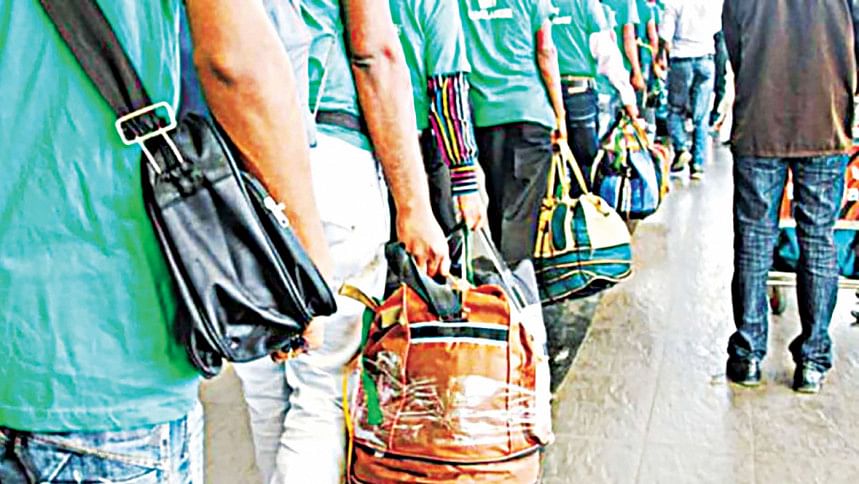Labour market expanding beyond Gulf, Southeast Asia

There has been a noticeable increase in the migration of Bangladeshi workers to smaller overseas labour markets through regular channels in recent years, signaling a promising path for the sector's expansion.
While Bangladesh has traditionally dispatched the majority of its workforce to the Middle East, particularly Gulf states, and Southeast Asia, there is now a steady annual flow of workers to other regions around the world.
One such destination is South Korea, where Bangladeshi workers are employed under the Employment Permit System.
The rise in workers' outflow to smaller markets is positive for the sector. However, workers are heading to smaller markets mainly through government arrangements. Private recruiting agencies should be involved in the process to increase outflow.
Introduced in 2004, this system was designed to efficiently manage foreign labour and address manpower shortages in small and medium-sized Korean companies, according to Human Resources Development Service of Korea.
The country recruited 9,170 Bangladeshi workers from January 2022 to June 2023. This shows a significant rise compared to the 3,934 workers recruited in 2018 and 2019, as per the Bureau of Manpower, Employment and Training (BMET) data.
The year 2020 and 2021 saw a decline in recruitment, with only 316 workers hired due to the challenges posed by the pandemic.
BMET data shows Bangladesh has sent nearly 1.54 crore workers abroad since 1976 till June 2023.
Of them, 91.13 percent headed to only eight countries -- Saudi Arabia, the United Arab Emirates, Kuwait, Qatar, Oman, and Bahrain in the Gulf, and Malaysia and Singapore in Southeast Asia.
According to the expatriates' welfare ministry's annual report, Bangladeshis migrated to at least 62 countries for employment in the 2021-2022 fiscal year.
Between January 2021 and June this year, about 23.7 lakh workers have gone abroad.
In October 2020, Italy lifted an eight-year embargo to hire workers from Bangladesh in "seasonal" and "non-seasonal" categories.
The following year, 653 workers made their way to Italy. This number was 13,251 in the subsequent 18 months, according to BMET data.
Furthermore, Bangladesh and Japan entered into separate memorandums of cooperation in 2018 and 2019, focusing on the recruitment of Bangladeshi individuals through Japan's "technical intern training" and "specified skilled worker" programmes.
From January 2022 to June of the current year, Japan hired 885 Bangladeshi workers, compared to 537 workers hired in the previous four years, including a period of decline during the pandemic.
Meanwhile, Seychelles took 782 Bangladeshi workers during the 2021-2022 fiscal year, marking a significant rise from the 79 workers who went there in the preceding fiscal year.
Seychelles and Bangladesh inked an agreement on labour cooperation back in 2019.
Additionally, there's an emerging trend of small-scale worker migration through regular channels to various European countries, including Serbia, Yugoslavia, Albania, and Poland.
This is highlighted in the Expatriates' Welfare Ministry's "Labour Migration Report 2021-2022," published in April this year.
In a broader context, Bangladesh is actively working to expand its overseas labour market in Europe, aiming to reduce its reliance on the main labour markets in the Middle East, says the report.
Syed Saiful Haque, chairman of Warbe Development Foundation, said the rise in workers' outflow to smaller markets is positive for the sector.
However, workers are heading to smaller markets mainly through government arrangements, he said, adding, private recruiting agencies should be involved in the process to increase outflow.
Globally, there is demand for workers and even countries with weaker economies can be destinations for Bangladeshi workers if they get expected wage and benefit, Saiful said.
"However, the Bangladesh government must ensure migrant workers' protection in destination countries," he added.

 For all latest news, follow The Daily Star's Google News channel.
For all latest news, follow The Daily Star's Google News channel. 



Comments